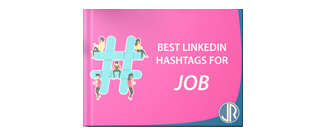You probably use Social Media in your private life. You might even have used it for your own business. Since the Social Media trend appeared worldwide in early 2007, more and more companies have seen opportunities in using such platforms.
People tend to use what they know: if you are a heavy user of Facebook in your private life, you might tend to use Facebook as well in your professional life for promotion purpose. This strategy makes sense as it is easier to use a tool with which you are already familiar.
However, I would like to show you through this article that your favorite Social Media might not be the most efficient one for your business promotion.
The top 10 Social Media Platforms in terms of Market Share
The following graph (created by Priit Kallas in July 2013) shows the Market Share (in terms of visits) of the 10 Top Social Networking Sites for the US market between 2008 and 2013.

What can be observed here is that some Social Media Platforms are obviously more used than others. We can see as well that the fluctuations are strong and the trends visible.
Considering this graph, we can easily deduct that most people use Facebook as a main platform, and therefore that most professionals would tend to use Facebook as well as a promotional platform. But is this a wise choice?
Which Social Media Platform is the most adapted to my business model?
There is no exact answer to this question. It depends indeed on your business model, but also on your specific market, your prospects preferences, your own knowledge and content, your habits and timing, etc...
Through this article I will try to give you some tips and guidelines concerning the most popular Social Media Platforms and how to choose the one corresponding the most to your needs. However, as mentioned earlier, keep in mind that trends are changing constantly, and what I am writing today could be wrong or outdated tomorrow.
Strategy to define the Social Media to include in your promotion concept
The purpose is not to find a Social Media that you are used to use. The goal here is to find a platform which is widely used by your prospects. If your prospects are using it, then you have chance to reach them.
I hear some people replying "Well, the previous chart shows pretty obviously that most people use Facebook. Hence, Facebook seem to be the best choice for me to reach a large target!".
Not quite true. The second thing to keep in mind is that you want to reach people at a time and place where they are receptive to your message. Even though all your prospects are using Facebook, does it mean that when using Facebook they would be receptive to your message?
Let's take an example: you are selling financial advice services to big companies. Even though all your prospects, decision makers from big firms, would be using Facebook, do you think that the best place & time to talk to them is while they are sharing private information with their families and friends?
The right platform or set of platforms is the one which combines two criteria: gathering your prospects and having them aware and receptive to your message. If you can find such a platform, and if you can feed it with the proper content, then you definitely are one the right path to a successful Social Media Strategy.
What are the existing Social Media Platforms, and how different are they?
I can't give you a full list containing all details of all different media. The reason is simple: new platforms are launched every day, and all are constantly changing. I will however try to give you a quick overview of the most famous platforms and try to orientate you in the right direction.
Also, keep in mind that each country has its own specificities. For example, China, Japan, India... all have their own Social Media which are locally much more popular than Facebook or Twitter.
In the coming lines, I will try to explain what are the main existing platforms and how different they are from one another. Please note that I reviewed only 12 platforms that I personally used, but there are plenty of others out there (StumbleUpon, Delicious, Reddit, etc...). The descriptions and explanations are just a first step for you to make your decision regarding which one(s) you should use, but the only way to fully understand those platforms is to try it out.
Platforms reviewed:
Facebook - Twitter - MySpace - Scoop.it - Google+ - Linkedin - Digg - Viadeo - Squidoo - Technorati - Tumblr - Youtube - Pinterest
I also encourage you checking the recap at the end of this article showing in a chart the position of all those platforms in terms of target group, communication, source, content, popularity and sphere. Social Media selection tool.
 Facebook Facebook
|
|
Summary
|
Facebook is the largest player in the Social Media field. Mostly used as a personal blog to display daily news, moods and pictures, Facebook is a very advanced system linking millions of people across the world.
|
|
Target
|
Very large audience – Facebook offers some much targeted functions for people using its advertising platform. However, in general, Facebook is a really wide platform which uses the concept of networking to reach potential visitors. There is little space for targeted marketing, and you must shoot with strategies aiming at “everyone” to reach a large market.
|
|
Communication
|
Horizontal – Facebook enables a true horizontal communication with your customers. This means that you can deliver information and content and visitors can comment on it, but they also have the ability to post their own content and to actively participate and interact with the community.
|
|
Source
|
Writing & Reposting – Facebook offers features to write and create your own content, but also provides users with several ways to repost content from other sites.
|
|
Content
|
Rich – Facebook provides users with a very large panel of content types including, but not only, text, pictures, videos, applications and links.
|
|
Popularity
|
Famous – Facebook was, in 2011, the most used Social Media Platform in the USA. It is definitely a widely used platform, and if your content actually matches this type of platform, this might be the best place for you to meet your prospects and customers.
|
|
Sphere
|
Personal – Facebook is almost exclusively working on the personal sphere. This is the place where you would share your thoughts and pictures with your friends and family, rarely share your business news and knowledge. Many companies are using Facebook as the platform provides tools such as the “pages” and the “groups” specially designed for such usage, but the products sold by those companies must be the kind you would share with your private circle. If you are selling cartoons or video games, Facebook might be the right place. However, if you are a metal supplier working exclusively in B2B, Facebook would surely not bring you many prospects.
|
 Twitter Twitter
|
|
Summary
|
Twitter follows Facebook in the battle of the most used Social Platform but remains far behind. Twitter has a radically different concept: share your mood, news, idea, suggestion within 140 characters with all your followers. You create a community of people voluntarily following your thoughts and share with them all things going through your mind.
|
|
Target
|
Very large audience – Twitter is used in many different ways, for different purposes, and by different types of people. This variety makes Twitter a platform with a very wide audience.
|
|
Communication
|
Horizontal – Twitter enables its users to deliver information, but also to receive information and comment on it. This provides an efficient tool for communication with your customers.
|
|
Source
|
Reposting – Twitter offers no possibility to create content and you can almost only repost information from other sources.
|
|
Content
|
Extremely limited – Twitter allows users to post maximum 140 characters per message. The content can be text only but can contain links to other sources.
|
|
Popularity
|
Famous – Twitter is the second Social Media Platform on the internet. It is not as popular as Facebook, but its users’ base is more homogenous and provides you with a better solution to reach specific targets.
|
|
Sphere
|
Personal & Professional – Twitter is both a personal and professional platforms. Using it, you will meet people Tweeting personal news and others providing professional information.
|
 Myspace Myspace
|
|
Summary
|
One of the very firsts Social Media Platforms, MySpace had much difficulty keeping the distance and competing with giants such as Facebook. The platform is losing market shares since 2008 and has devoted itself in serving music to own the niche market. Very close to Facebook in the usage, MySpace enables its users to share their latest news and ideas in an original way and to build their network.
|
|
Target
|
Decreasing audience – Even though Myspace still has a large audience, this one is seriously decreasing since 2008 and the explosion of Facebook. Moreover, Myspace is now almost exclusively oriented to musicians and bands. If your business is related to music, Myspace is definitely the perfect platform for you. Otherwise, you might want to search for another one.
|
|
Communication
|
Horizontal & vertical – Myspace offers a service very similar to what Facebook provides. Communication are horizontal as people can post directly on your page and send you content, but the concept isn’t as developed as on Facebook, and in many situation the communication is uniquely vertical, with very little possibility for visitors to interact beyond the “comments” section.
|
|
Source
|
Writing – Myspace tries to encourage its users to create and post content on the platform. Even though you have the possibility to link to other contents, this is not the most efficient way of using Myspace, and you would have better provide unique content than just posting if you want to keep your visitors interested.
|
|
Content
|
Rich – MySpace offers plenty of tools and features to create and post content such as rich text, videos, animations, pictures, music, and much more!
|
|
Popularity
|
Famous – MySpace was a pioneer in the Social Media field and attracted millions of users in the past 5 years. Even though the platform is seriously losing market shares, it still remains one of the major players of the Social battle.
|
|
Sphere
|
Personal – MySpace is mainly made for personal usage, except for the professional music bands & singers. It would be very difficult to use it as a professional platform for B2B promotion outside of the musical sphere.
|
 Scoop.it Scoop.it
|
|
Summary
|
Scoop.it is a very innovative concept, reusing basics from Tumblr, Digg and Squidoo. On Scoop.it, you re-post all articles you might have found interesting on the web inside your own specialized magazine. This magazine can then be read by people all over the world and you become an expert in your specific area without even having to write a single line of text.
|
|
Target
|
Increasing large audience – Still a newbie in the Social Media battle, Scoop.it has proved itself very innovating and efficient. Based on a concept close to Squidoo, Scoop.it reaches a very large panel of people with different backgrounds and interests.
|
|
Communication
|
Vertical – Scoop.it enables users to comment each article or re-post those on other platforms. This is however the only interactivity existing between the editor and his readers: the message is almost uniquely vertical and there is very limited interactivity between participants.
|
|
Source
|
Re-posting – Scoop.it is based on the idea of finding interesting articles all over the net and re-posting it in your own magazine (always redirecting to the original article). There is no content creation here.
|
|
Content
|
Limited – As Scoop.it is mainly a reposting platform, there is very limited content creation possibility. However, all reposted articles can contain unlimited content.
|
|
Popularity
|
Anonymous – Scoop.it is pretty new in the Social Media landscape and didn’t have time to grow much yet but already hundreds of thousands of users through the world have joined in 2011.
|
|
Sphere
|
Professional – Scoop.it isn’t only professional, but it displays topic in a very professional way. You might as well reach people passionate in toys or jokes and build a magazine dedicated to such topic. However, Scoop.it hasn’t been designed to host personal thoughts like a personal blog would. You only reach people who are interested in your subject.
|
 Google+ Google+
|
|
Summary
|
Direct threat for Facebook, Google developed Google+ in 2011. Google+ offers the same functions as Facebook with a very similar concept but avoiding all the main mistakes of Facebook: clearly separated circles of contacts, better confidentiality settings and more professional feeling, including also all the features created by Google.
|
|
Target
|
Increasing large audience – Google started in mid-2011 and after a few hours only all servers were full already and the number of accounts had to be limited. Google+ doesn’t have yet as many users as does Facebook but will surely continue to increase. Like Facebook, Google+ reaches a very large audience without focusing on a specific topic.
|
|
Communication
|
Vertical & Horizontal – Google+ is mainly vertical as it leaves much less liberty than Facebook when it comes to interaction with others. The basic concept is here to send your personal or professional news to your different circles of contacts (friends, colleagues, family, etc…) and eventually commenting on their own news. The “wall” function hasn’t been developed to the level of Facebook.
|
|
Source
|
Writing – Google+ is made to share content with others. You can indeed share links to external contents, but the main purpose is here to share information written by you.
|
|
Content
|
Rich – Google+ offers a fairly large choice of content types and tools. You will be able to use text, videos, photos, links, and even geo-location tools.
|
|
Popularity
|
Famous – Even though Google+ isn’t yet as famous as Facebook, Google itself doesn’t need to be presented anymore and its popularity talks for itself.
|
|
Sphere
|
Professional & Personal – Google+ has this great advantage on Facebook that it clearly separates your circles of contacts. As a result, you can share different contents with different types of people and then reach different of levels of promotion, both for personal and professional usage.
|
 LinkedIn LinkedIn
|
|
Summary
|
LinkedIn is the leader of its niche market: the professional Social Media platforms. This media enables its users to create an online professional profile and build their network.
|
|
Target
|
Large audience – LinkedIn is worldwide used and reaches people in a very huge variety of fields.
|
|
Communication
|
Vertical & Horizontal – LinkedIn is an efficient way for professionals to publish their news and information, but the platform also provides tools and features that bring people together on specific topics and encourage discussions and interactions.
|
|
Source
|
Writing – LinkedIn lets you link to your personal websites and pages, but mainly it encourages you to create and publish unique content to attract visitors to make connections with you.
|
|
Content
|
Quite Rich – LinkedIn offers users to publish text and pictures as well as a strength portfolio, however this isn’t the most complete panel of content types existing.
|
|
Popularity
|
Famous – LinkedIn is surely not the most popular Social Media platform out there, but in its own specific field, it is the leader.
|
|
Sphere
|
Professional – LinkedIn is definitely a professional platform to establish connections and networks. There is no space there for personal and private talks.
|
 Digg Digg
|
|
Summary
|
Digg is the leader in its field. The concept here is to share with your community and with the whole platform your favorite websites. The main purpose of Digg is to help your favorite webpages to get the attention they deserve.
|
|
Target
|
Limited audience – Digg is a worldwide platform reaching millions of users over the world and the platform audience is huge. However, your personal reach as an user is very limited: you would influence only your direct contacts, and the rest of your suggestions will just melt into the global statistics.
|
|
Communication
|
Vertical – Communications of Digg are very limited and the few communications you might have are mostly vertical.
|
|
Source
|
Reposting – There is no creation of content on Digg. The only use of this platform is to show others what you found out there and push it up.
|
|
Content
|
Very Limited – As there is no creation of content, the only possibility here is to share links.
|
|
Popularity
|
Famous – Digg is a very famous platform in its field, alongside with Delicious.
|
|
Sphere
|
Professional & Personal – Both personal and professional aspects are represented on Digg as websites shown there can cover any topic.
|
 Viadeo Viadeo
|
|
Summary
|
Viadeo fights in the same category as Linkedin, but in a more restrictive way. Where LinkedIn already reached 100Millions users, Viadeo is “only” gathering about a 40Millions of them. For the rest, the concept is very similar.
|
|
Target
|
Large audience – Viadeo reaches over 40Million people all over the world, all accessible to your network through connections.
|
|
Communication
|
Vertical – Communications of Viadeo are mainly vertical: you inform people of your news and information, but very little interactivity is possible on a large scale.
|
|
Source
|
Writing – Here also, the platform expects you to provide valuable content specially written for this usage.
|
|
Content
|
Quite Rich – Viadeo does not provide extraordinary tools for content creation but all the necessary tools are available.
|
|
Popularity
|
Well known – Viadeo isn’t as famous as LinkedIn but the tool is more focused and will, for example, be very developed in specific countries such as France.
|
|
Sphere
|
Professional – Viadeo is a professional platform and aims to be used for professional content and networking.
|
 Squidoo Squidoo
|
|
Summary
|
Squidoo is an informational platform. The concept is here to build a page on a topic and to bring as much content as you have on it. It works on the same principle as Wikipedia (you create articles about anything) but with important differences: you are the only one to write (others can’t modify your work) and you do not have to be objective, you can give your personal opinion. Squidoo is an easy way to publish your content when you can’t or don’t want to create a webpage.
|
|
Target
|
Large audience – Squidoo can be used to discuss any possible topic and therefore gathers people from very different fields.
|
|
Communication
|
Vertical – Squidoo offers an absolutely vertical communication: no possible interaction on the articles except for using some other platforms plugins.
|
|
Source
|
Writing – Squidoo shows its power only when unique content is created and published. It becomes meaningless if used for reposting only.
|
|
Content
|
Rich – Squidoo provides its users with very rich content tools such as text, pictures, video, polls, etc...
|
|
Popularity
|
Well known – Squidoo hasn’t met a success comparable to Facebook or Twitter due to its lack of possible interactions. However, Squidoo remains a well known platform that attracts lots of visitors. Its power comes from the fact that people may arrive on your specific page without specifically searching on Squidoo: all your pages will be independently indexed on search engines.
|
|
Sphere
|
Professional & Personal – As any topic can freely be discussed on Squidoo, the platform gathers both professional and personal topics and people.
|
 Technorati Technorati
|
|
Summary
|
Technorati is one of the oldest platforms of Social Media on the internet. Technorati isn’t technically a Social Media as it behaves more like a huge blogging directory. However, with time, the platform has extended its features and came closer and closer to a real Social Media website. The concept of Technorati is that bloggers will subscribe and link their blog to the platform so that all new articles can be streamed in the huge information flow.
|
|
Target
|
Large audience – Technorati accepts almost all kinds of weblogs and therefore reaches a very large audience. Nevertheless, the platform recently decided to stop handling non-english blogs for maintenance reasons. Therefore, the target is now only english speakers.
|
|
Communication
|
Vertical – Even though it offers some communication tools, Technorati is mainly used to re-publish content and not to communicate with visitors.
|
|
Source
|
Re-posting – Technorati has been designed for content re-publishing only (except for your personal presentation and your blog’s one).
|
|
Content
|
Limited – Technorati will link to any content you might create but will not provide you with any special tool to create your own content.
|
|
Popularity
|
Well known – For those who blog for long and have experienced the “Ping” concept, Technorati is a reference of Social Media and blog directory. The platform might not be very famous, but it is a powerful tool influencing the whole blogs network.
|
|
Sphere
|
Professional & Personal – Any type of blog can use Technorati and therefore this platform addresses to almost anyone, including both personal and professional blogging.
|
 Tumblr Tumblr
|
|
Summary
|
Tumblr is half way between a standard blog and platforms such as Scoop.it and Digg: it enables user to post their own blogging content, but also to re-post articles and others from other platforms and blogs. Tumblr works on the concept of sharing anything you might have discovered with a simple click.
|
|
Target
|
Limited audience – Even though you can technically reach anyone in the world using Tumblr, your only viewers are usually your direct contacts and networks.
|
|
Communication
|
Vertical – As most blogs, Tumblr is mainly vertical when it comes to communication. The only interactivity stands in the usual comments section present on almost every blog platform.
|
|
Source
|
Re-posting and Writing – Tumblr offers both possibilities to its users. You can either write your own content, or repost others’ ones. The most efficient method to receive visitors is indeed to mix the two methods.
|
|
Content
|
Rich – Tumblr offers all the usual tools that blogs platforms would provide (text, pictures, videos, etc…) and also provide users with easy to share buttons, so that you can, in a simple click, re-post any interesting content you found online.
|
|
Popularity
|
Famous – Tumblr is a leader in its specific niche: blogging by reposting content.
|
|
Sphere
|
Professional & Personal – As any blog on the web, Tumblr gives you free choice in terms of content creation, and therefore reaches both professional and personal spheres.
|
 Youtube Youtube
|
|
Summary
|
Youtube is for years the leader of video sharing platforms. Since it was bought by Google its power increase even more. Youtube is the platform most internet users would visit to view or post videos.
|
|
Target
|
Large audience – Youtube is a worldwide platform and reaches billions of people all over the world in all possible fields.
|
|
Communication
|
Vertical and Horizontal – Youtube is mainly vertical as its first purpose is to communicate your message through a video. However, the platform also offers different options of interactions through comments and “video response”.
|
|
Source
|
Writing – Youtube enables its users to “re-post” videos on their own account, but the main use of the platform is to create unique content.
|
|
Content
|
Limited – Youtube offers no alternative to videos: this is a video platform and you won’t communicate using any other form of content on this website. You can add some text for descriptions and tags, but the main message is always using video.
|
|
Popularity
|
Famous – Youtube is, with Google, the most famous website over the internet. This awareness leaves very little chance for other similar platforms (dailymotion, wat, etc…) to grow.
|
|
Sphere
|
Professional & Personal – Youtube enable video posting on any possible topic touching both personal and professional spheres.
|
 Pinterest Pinterest
|
|
Summary
|
Pinterest is the new comer in the Social Media's world. It might seem too simple at first sight, but don't get fooled by it: that was the same people used to say about Twitter before this one exploded. Pinterest is a Social platform focused on visuals. The concept is simple: whenever you meet a picture that interests you (funny, stunning, shoking, informative, etc...), immediately share it with your contacts.
|
|
Target
|
Large audience – Pinterest tries to regroup all possible types of pictures within on database.
|
|
Communication
|
Vertical – Pinterest offers its users with possibilities to share news in a visual format. It is mostly vertical communication from poster to reader, seldom a way of interaction between people.
|
|
Source
|
Re-posting – Even though you can upload your own pictures, 90% of the content comes from other websites shared on the platform.
|
|
Content
|
Limited – As mentioned, Pinterest's content is exclusively visual. It is all about sharing pictures, sometimes videos, with a short comment or description.
|
|
Popularity
|
Relatively popular – Growing fast, Pinterest is a newbie in the Social Media world but already managed to generate a buzz around its concepts.
|
|
Sphere
|
Professional & Personal – Mainly designed for personal usage, Pinterest is perfectly adapted to a professional usage for those businesses that are based on visual elements.
|
(You can freely re use the above chart by clicking on the "share" button on the right of the graph. Please link to this article if you decide to post it on your own blog)
If you disagree with some points of this article or would like further information, please feel free sharing your thoughts below in the comments section.
Now that you have selected the best set of Social Media for your business, I encourage you to read my article "Become a connector: the importance of building your network" to directly apply the advice stated in this article.
Julien RIO.






























 Français
Français English
English